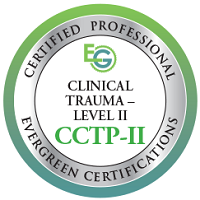Your Brain on Psychotherapy

The use of psychotherapy has decreased in the last decade; meanwhile the use of prescribed medications has been on the rise (APA, 2012). Now equipped with technologies that image the brain, the field of psychology is rising to the challenge to demonstrate that psychotherapy works.
“Research suggests that psychotherapy can produce changes in the brain that are comparable to those seen in drug treatments and that avoid the painful side effects”
-Dr. Schwartz
Picturing the Brain
Not very long ago the brain was believed to be a physiologically static organ that only changed during the critical period of early childhood. Then we entered the age of the brain. Now we have technologies such as positron emission tomography (PET) and single-photon emission computed tomography (SPECT) scans. They allow us to see changes in patterns of neural activity. The science of neuroplasticity now has several decades of evidence demonstrating that changes in neural activity occur across the lifespan (See more here).

A simplified model of the brain reveals that there are three distinct layers of the brain with evolutionary origin:
- The reptilian brain: reflex actions
- The limbic brain: memory, learning, and emotions
- The neocortex: reflective processing and decision making.
The reptilian brain manages the body’s primal functions including breathing, heart rate, balance, and body temperature. The limbic system, largely the amygdala, hippocampus, and hypothalamus, provide emotional valance and initiate the body’s autonomic nervous system (ANS) as needed to manage stress and trauma. A more recently evolved portion of the brain is the neocortex, more specifically the prefrontal cortex which is associated with the capacity to calm our fear responses. The brain also has two hemispheres:
- Left hemisphere: Verbal processing and organizing information sequentially
- Right hemisphere: Assigns emotional significance to incoming information and regulates hormonal and autonomic responses.
Psychotherapy and the Brain

When looking at psychiatric disorders from the lens of the brain there are three core patterns of neural activity. High arousal patterns that are associated with overactivity in the lower brain centers and a lack of mediating actions from the prefrontal cortex (e.g. anxiety, panic disorder). Low arousal patterns which are associated with low levels of serotonin, and endocrine system deficiencies (e.g. depression). Combined arousal types involve a combination of high and low activation that have both physiological patterns of symptoms (e.g. PTSD, bipolar disorder).
Imaging studies illuminate the neural patterns that are distinctly associated with different psychiatric diagnoses. Moreover, imaging has been used to examine the effects of psychotherapy on the brain. Here are some of the findings:
- EMDR increases activity in brain areas known to mediate PTSD symptoms: Several studies have looked at the use of Eye Movement Desensitization and Reprocessing (EMDR) for PTSD using SPECT scans. Results showed increases in activation in the prefrontal cortex, anterior cingulate, and evidence of bilateral (both hemispheres) activation of the neocortex. EMDR reduced PTSD symptoms through activation of brain centers that play a crucial role in distinguishing between actual recurrences of a trauma and sensory imput that reminds us of those past events (see full Van der Kolk article).
- CBT decreases activity in brain centers responsible for anxiety: One study looked at outcomes for social anxiety within three groups, a cognitive behavior therapy (CBT) group, a group receiving the SSRI citalopram (Celexa), and a waitlist group. Using PET scans, results indicated decreased activity in limbic centers (e.g. amygdala) and decreases in social anxiety among both the CBT and citalopram groups at 9 weeks and 1 year post treatment. No changes were seen in the waitlist groups. The results suggest that psychotherapy efficacy is on par with the results achieved with medications (see full article here).
- Relational therapy changes serotonin metabolism and improves depression: SPECT scans revealed changes in serotonin metabolism in patients with depression. It is well known that depression is associated with low levels of available serotonin in the bloodstream. In this study, the depressed patients had initially shown markedly reduced serotonin levels; however, after 1 year of psychodynamic (relational) psychotherapy patients had normal serotonin uptake as compared to no changes in patients who had received no treatment. This finding suggests that therapy itself produced comparable results to patients taking SSRIs (such as Prozac) (see full more here).
- CBT results in changes in thyroid functioning: It is lesser known that depression is strongly associated with impairments in thyroid functioning, primarily thyroxine or T4. Studies have shown that SSRI treatment for patients with depression will show improvements in thyroid functioning. However, research providing cognitive behavioral therapy (CBT) for major depressive disorder also produced changes in levels of T4 that were identical to those produced by antidepressant medications (see article here).
Medications are necessary sometimes and it is generally recommended that they be used in conjunction with psychotherapy rather than in lieu of. However, given the amount of money and research supporting the pharmaceutical industry, the efficacy of psychotherapy can be overlooked. In the last 15 years science has taken great strides towards a better understand the relationship between psychology and the brain (review article here). As a result our knowledge of the brain and the neurobiological effects of our interventions is not only validating but demystifying psychotherapy.
To learn more:
- Medications and the treatment of PTSD
- The neurobiology of relationships and the plastic brain
- Your brain, perceptions, and enhancing emotional intelligence
About Dr. Arielle Schwartz

Dr. Arielle Schwartz is a licensed clinical psychologist, wife, and mother in Boulder, CO. She offers trainings for therapists, maintains a private practice, and has passions for the outdoors, yoga, and writing. Dr. Schwartz is the author of The Complex PTSD Workbook: A Mind-Body Approach to Regaining Emotional Control and Becoming Whole. She is the developer of Resilience-Informed Therapy which applies research on trauma recovery to form a strength-based, trauma treatment model that includes Eye Movement Desensitization and Reprocessing (EMDR), somatic (body-centered) psychology and time-tested relational psychotherapy. Like Dr. Arielle Schwartz on Facebook, follow her on Linkedin and sign up for email updates to stay up to date with all her posts.








